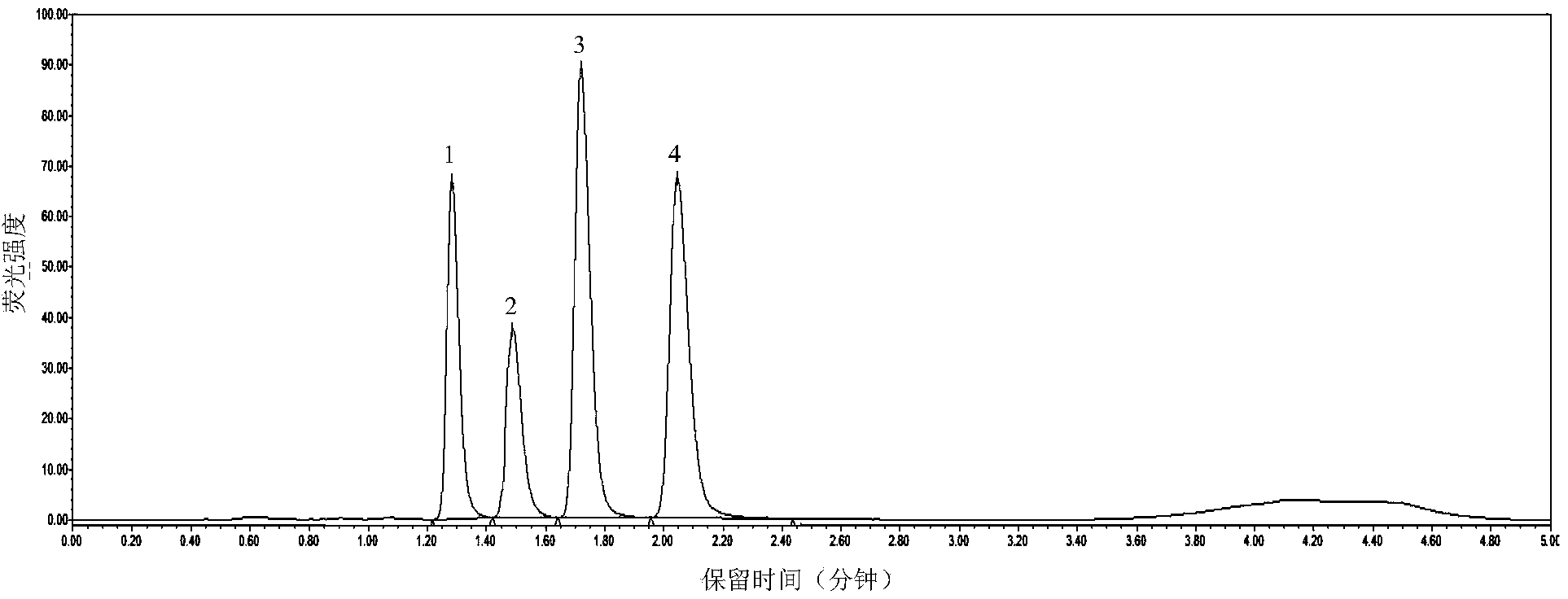Aspergillus flavus producing no aflatoxin and application thereof
A technology of aflatoxin and aspergillus flavus, which is applied in the directions of application, fungi, method of using spores, etc., to achieve the effect of reducing aflatoxin pollution
- Summary
- Abstract
- Description
- Claims
- Application Information
AI Technical Summary
Problems solved by technology
Method used
Image
Examples
Embodiment 1
[0044] Embodiment 1, collection, separation, identification of Aspergillus flavus strain GZ-17
[0045] 1. Isolation of Aspergillus flavus strain GZ-17 from peanut planting soil
[0046] Isolation of Aspergillus flavus strains from Guangdong peanut planting soil with DG18 medium. The specific operation is as follows:
[0047] 1. Preparation of soil sample bacterial suspension
[0048] Take 10g of soil sample, add 90mL of 0.1% peptone sterile water (w / v), shake at room temperature for 30min, and make 10 -1 bacteria suspension; then take 0.5mL10 -1 Add 4.5mL0.1% peptone sterile water to the bacterial suspension to prepare 10 -2 Bacteria suspension of dilution; prepare 10 as above -3 diluted bacterial suspension.
[0049] 2. Isolation and purification of strains
[0050] Take 0.1mL bacterial solution for each dilution, spread on DG18 medium (recipe: 5.0g casein peptone, 10.0g anhydrous glucose, 1.0g potassium dihydrogen phosphate, 0.5g magnesium sulfate, 0.002g clonamine, ...
Embodiment 2
[0068] Example 2. Deletion identification of aflatoxin synthesis gene in Aspergillus flavus (Aspergillus flavus) GZ-17CGMCC No.8050
[0069] The inventors of the present invention took the sequence of the toxin synthesis gene of Aspergillus flavus with the Genbank accession number AY510451 as a reference, and designed four pairs of primers for the toxin synthesis related genes hypB, hypC, hypD and hypE. The primers of other genes refer to Perng-Kuang Chang (Chang , P.K., Horn, B.W. and Dorner, J.W. (2005) Sequence breakpoints in the aflatoxin biosynthesis gene cluster and flanking regions in nonaflatoxigenic Aspergillus flavus isolates. Fungal Genet Bio42, 914–923.). The 29 genes to be tested and their corresponding primer sequences are shown in Table 1.
[0070] Table 1 Primer sequences of different aflatoxin synthesis genes
[0071]
[0072]
[0073]
[0074] Extract the genomic DNA of Aspergillus flavus (Aspergillus flavus) GZ-17CGMCC No.8050, and use it as a templa...
Embodiment 3
[0079] Example 3. Inhibition of Aspergillus flavus (Aspergillus flavus) GZ-17CGMCC No.8050 on PDA medium to produce aflatoxin-producing Aspergillus flavus
[0080] 1. Experimental method
[0081] Prepare spores at a concentration of 10 4 、10 5 、10 6 pcs / ml Aspergillus flavus (Aspergillus flavus) GZ-17CGMCC No.8050 and 10 5 aflatoxin-producing Aspergillus flavus GD-1 spore suspension, the two were mixed at a volume ratio of 1:1, and after mixing, 30 μl of the spore suspension was added to a 6cm PDA medium (formula: Potato powder 6.0g / L, glucose 20.0g / L, agar 20.0g / L) plate, cultivated at 30°C for 10 days, observed the colony morphology, and determined the content of aflatoxin in it by ultra-high performance liquid chromatography.
[0082] Among them, the aflatoxin (in AFB) was determined by ultra-high performance liquid chromatography 1 As an example) the content method is as follows:
[0083] (1) Preparation of samples to be tested
[0084] After culturing at 30°C for 1...
PUM
 Login to View More
Login to View More Abstract
Description
Claims
Application Information
 Login to View More
Login to View More - R&D
- Intellectual Property
- Life Sciences
- Materials
- Tech Scout
- Unparalleled Data Quality
- Higher Quality Content
- 60% Fewer Hallucinations
Browse by: Latest US Patents, China's latest patents, Technical Efficacy Thesaurus, Application Domain, Technology Topic, Popular Technical Reports.
© 2025 PatSnap. All rights reserved.Legal|Privacy policy|Modern Slavery Act Transparency Statement|Sitemap|About US| Contact US: help@patsnap.com



